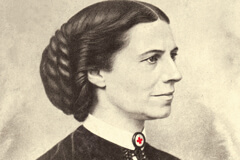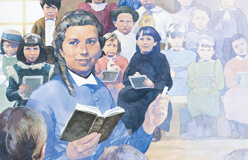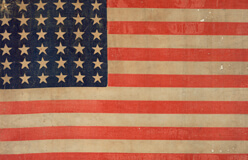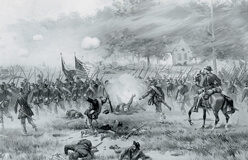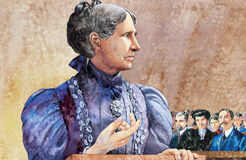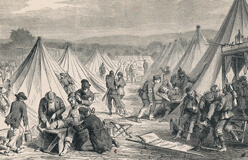In 1869, Clara Barton went to Europe to rest. But she was soon busy again with a cause that brought together her many skills and talents.
In Switzerland, she met members of the International Committee for the Relief of the Wounded in War. These men talked to Barton about a new organization. They called it the International Red Cross. In 1873, Clara Barton returned to the United States. She was convinced that America needed a Red Cross.
